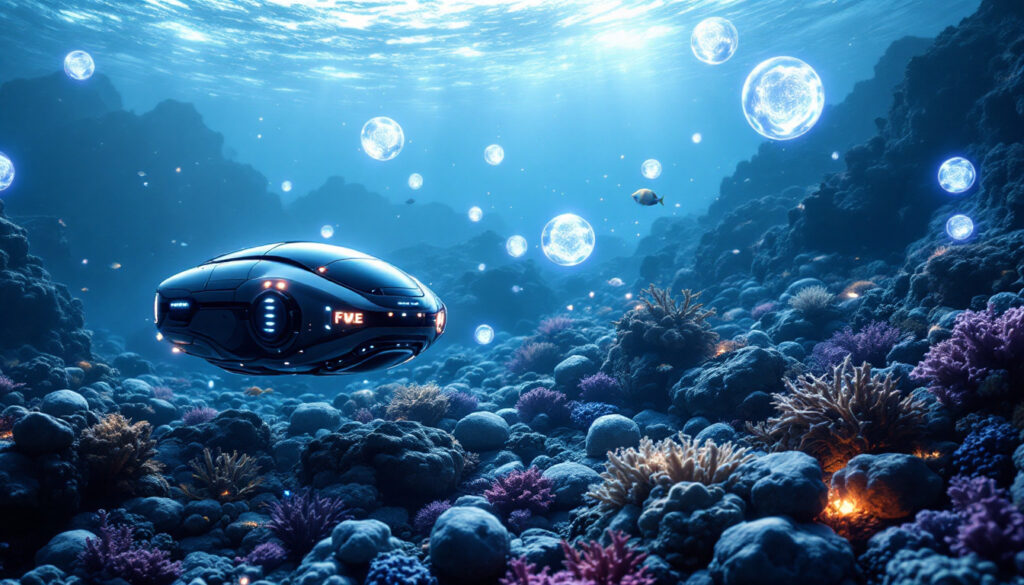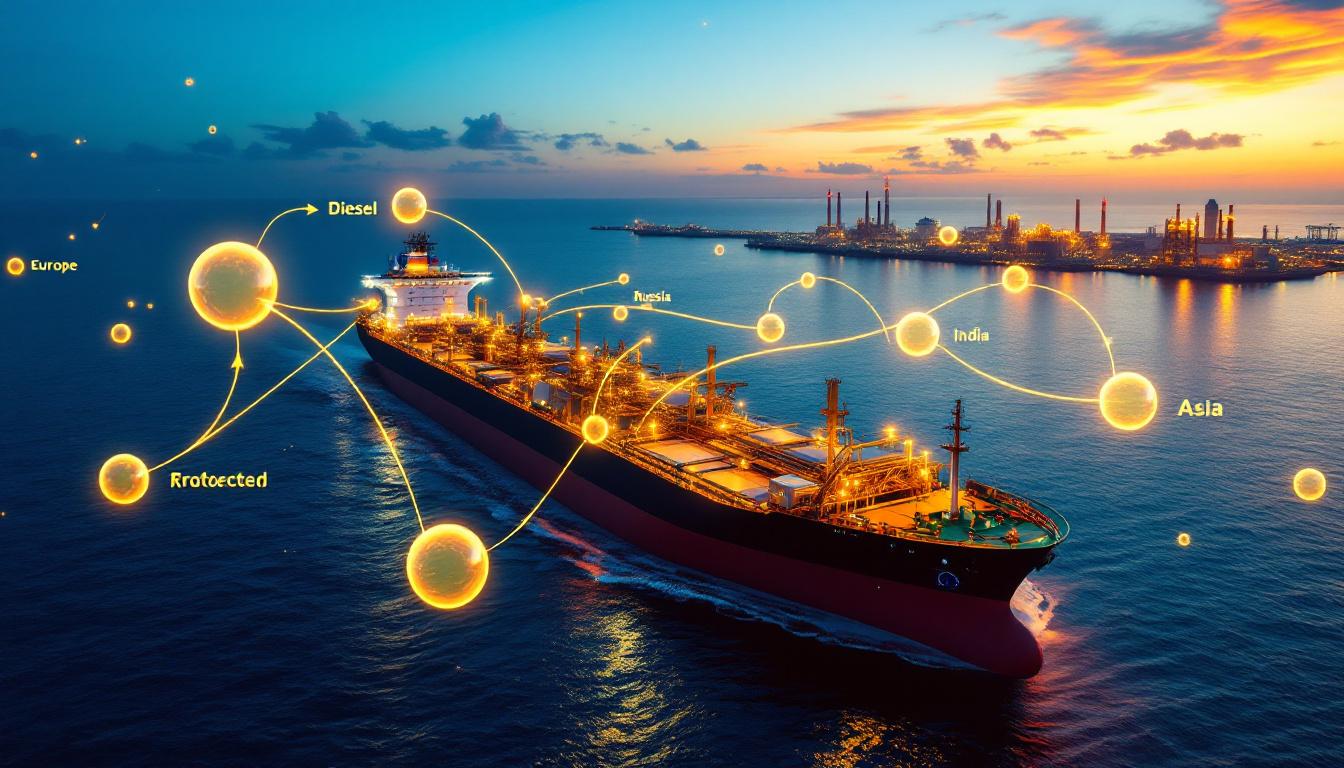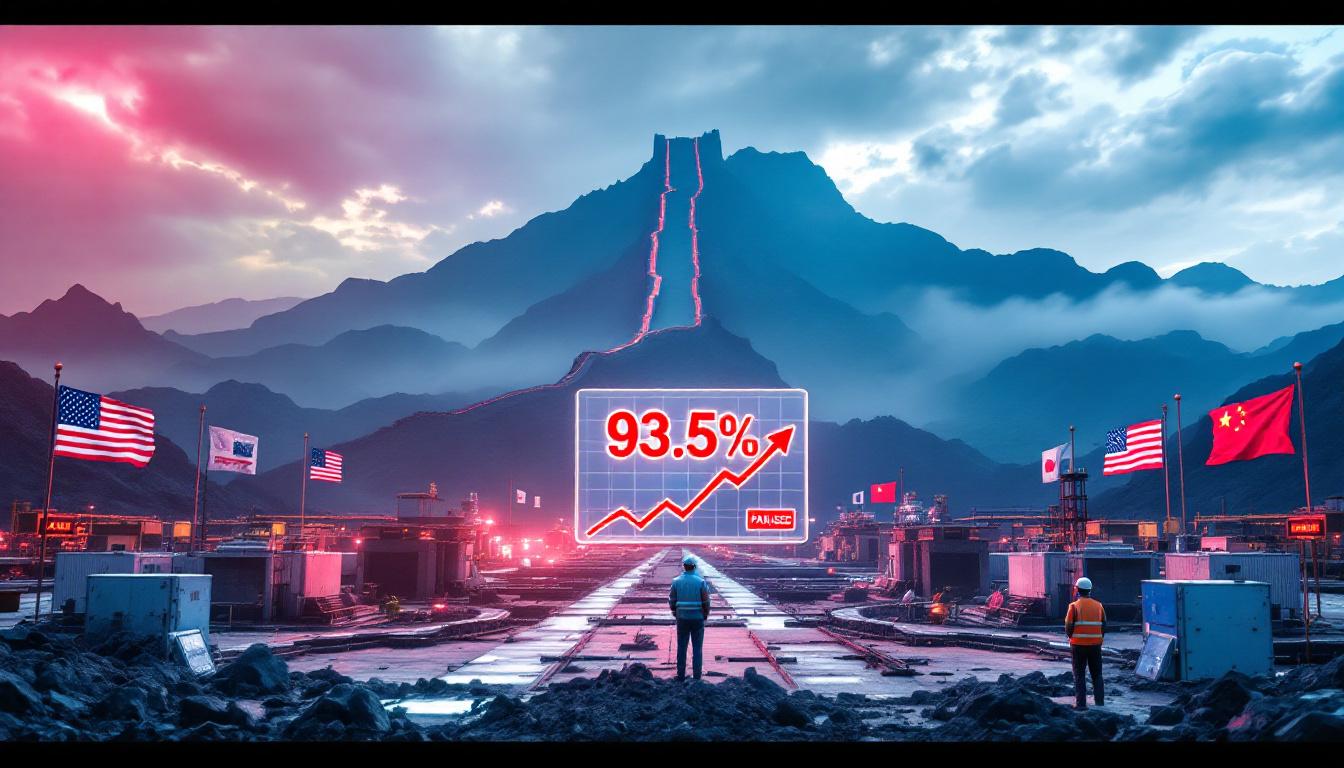What is Impossible Metals Seeking in American Samoa?
In a significant move for deep-sea mining development, California-based Impossible Metals has requested the US Department of Interior's Bureau of Ocean Energy Management (BOEM) to launch a commercial auction for polymetallic nodule deposits near American Samoa. This request represents a pivotal moment in the domestic critical minerals strategy, targeting resources within US territorial waters that extend up to 200 nautical miles from shore.
According to BOEM officials, the agency faces a deadline of May 23, 2025, to determine "whether to initiate steps that could lead to a lease sale." This decision carries particular weight as BOEM hasn't conducted a competitive lease sale since 1991—a 33-year gap that underscores the potential significance of this application.
If BOEM approves proceeding with the request, it would trigger a public comment period before any auction could be held, ensuring stakeholder input on this pioneering venture in US waters.
The Mining Lease Application Process
The application process highlights the complex regulatory landscape for deep-sea mining in US territorial waters. Unlike international waters, which fall under the jurisdiction of the International Seabed Authority (ISA), American Samoa's surrounding ocean falls squarely under US federal jurisdiction—an important distinction that streamlines the regulatory process.
"The agency will decide by May 23 whether to initiate steps that could lead to a lease sale," noted a BOEM spokesperson in official communications. This timeline establishes a clear deadline for what could become the first commercial deep-sea mining operation in US-controlled waters.
The application must navigate multiple regulatory frameworks, including the National Environmental Policy Act (NEPA) and Clean Water Act provisions, requiring extensive environmental impact assessments before approval. Industry analysts estimate the complete timeline from initial approval to operational status could span 5-7 years, accounting for environmental studies, technology deployment, and infrastructure development.
Critical Minerals in American Samoa Waters
The waters surrounding American Samoa contain substantial deposits of polymetallic nodules—potato-shaped rocks that form over millions of years through mineral precipitation around core objects like shark teeth or shell fragments. These unassuming formations represent a mineral treasure trove of strategic importance.
The nodules found in American Samoa's waters are particularly rich in nickel (1-3% by mass), cobalt (0.2-0.5%), copper, and manganese—all classified as critical minerals essential for advanced technology manufacturing. These elements serve as fundamental building blocks for electric vehicle batteries, renewable energy systems, and advanced electronics, positioning this potential mining operation at the intersection of technological advancement and resource security.
The location's strategic value is magnified by its occurrence within US territorial waters, which means mining operations would not require permission from the International Seabed Authority—a significant advantage for expediting development compared to international waters. Furthermore, understanding the geology of ore deposits provides crucial context for evaluating these polymetallic nodules.
How Does Deep-Sea Mining Technology Work?
Impossible Metals has developed an innovative approach to deep-sea nodule collection that represents a fundamental departure from traditional seabed mining methods. Their technology centers on specialized robotic devices equipped with large claw mechanisms specifically designed for selective nodule harvesting from the ocean floor.
The company's robotic collectors operate at depths of 4,000-6,000 meters, withstanding water pressures exceeding 600 atmospheres—technical challenges that have required significant engineering innovations in materials science, hydraulics, and control systems.
What distinguishes this technology is its integration of artificial intelligence that enables the robots to visually differentiate between valuable nodules and marine life with reported accuracy exceeding 90% in controlled trials. This selective harvesting approach aims to minimize ecosystem disruption by targeting only the mineral-rich nodules while leaving surrounding marine habitats relatively undisturbed.
Impossible Metals' Innovative Approach
The cornerstone of Impossible Metals' approach is its AI-powered detection system that allows for precise identification and collection of nodules. According to company engineers, "Our AI reduces bycatch of marine life by targeting nodules algorithmically," representing a significant advance over indiscriminate collection methods.
This selective harvesting technology uses machine learning algorithms trained on extensive image datasets of seabed morphology to distinguish nodules from biological material. The robots' claw mechanisms are designed to delicately extract nodules without disturbing large areas of the seabed, addressing one of the primary environmental concerns associated with deep-sea mining.
Industry comparisons suggest that traditional dredging methods typically disturb 5-10 times more seabed area than selective harvesting approaches, highlighting the potential environmental advantages of Impossible Metals' technology. The European-funded "Blue Harvesting" project, using similar AI-guided robots, has achieved approximately 70% efficiency in nodule collection while significantly reducing ecological disruption.
Environmental Considerations
The environmental implications of deep-sea mining remain hotly contested among scientists, industry representatives, and conservation groups. Supporters of deep-sea mining argue that the concentrated mineral deposits in nodules mean less material must be processed compared to terrestrial mining, potentially reducing the overall environmental footprint of mineral extraction.
Additionally, proponents highlight that deep-sea mining eliminates many of the social and human rights concerns associated with land-based mining operations in politically unstable regions, while reducing deforestation and habitat destruction on land.
Critics, however, maintain that more comprehensive research is needed on potential ecosystem impacts before commercial-scale operations begin. "Long-term impacts of sediment plumes from robotic harvesting remain unstudied," notes one environmental researcher, pointing to knowledge gaps in understanding how disturbed seabed sediments might affect marine ecosystems over time.
Impossible Metals' selective harvesting approach attempts to address these concerns by minimizing the creation of sediment plumes—a significant improvement over traditional methods that can create plumes affecting 100-200 square kilometers annually, compared to 10-20 square kilometers for selective harvesting techniques. These environmental concerns overlap with broader mining ESG challenges facing the entire industry.
What Are the Regulatory Frameworks for Deep-Sea Mining?
The regulatory landscape governing deep-sea mining in American Samoa presents a unique case study in maritime resource management. As these waters fall under US federal jurisdiction, they're subject to domestic environmental and resource management laws rather than international frameworks that govern mining in international waters.
The Bureau of Ocean Energy Management (BOEM) serves as the primary regulatory authority overseeing mineral deposits in federal waters, including those surrounding American Samoa. This regulatory structure creates a streamlined approval pathway compared to international waters, where the International Seabed Authority would exercise jurisdiction.
Critically, any mining lease application must comply with domestic environmental protection statutes, including the preparation of Environmental Impact Statements (EIS) under the National Environmental Policy Act and adherence to Clean Water Act provisions—regulatory hurdles that can take 18-24 months to clear.
US Regulatory Environment
A defining characteristic of the US regulatory environment for deep-sea mining is that the United States has not ratified the United Nations Convention on the Law of the Sea—a decision that exempts US operations from International Seabed Authority oversight within its territorial waters.
While 168 countries have joined the ISA as members, the US relies instead on domestic laws like the Outer Continental Shelf Lands Act to regulate seabed resource extraction. This regulatory independence provides greater flexibility but also raises questions about alignment with international environmental standards.
BOEM officials have confirmed that "Territorial water leases require compliance with NEPA and Clean Water Act," establishing clear environmental protection requirements for any potential mining operation. These domestic regulations may in some cases exceed international standards, as seen in Norway's 2023 approval of deep-sea mining in its territorial waters under stricter emission limits than ISA standards.
Potential Policy Changes
The regulatory landscape may soon undergo significant evolution. Reuters reported that the White House is considering an executive order that would formalize US policy on deep-sea mining, potentially creating a framework that would allow companies to bypass the International Seabed Authority entirely.
"An executive order bypassing the ISA could destabilize international mineral governance," warns one legal scholar specializing in maritime law. Such a move would represent a significant shift in US policy toward critical mineral acquisition and could reshape international deep-sea mining governance.
The potential policy change aligns with broader strategic initiatives to secure domestic access to critical minerals and reduce dependence on foreign sources. If implemented, this executive action would establish a clear regulatory pathway for companies like Impossible Metals to develop deep-sea mining operations within US territorial waters.
Why Are Deep-Sea Minerals Strategically Important?
The strategic significance of deep-sea minerals has escalated dramatically amid growing geopolitical competition for critical mineral resources. For the United States, the polymetallic nodules in American Samoa's waters represent not just economic opportunity but national security assets in an increasingly resource-constrained world.
Deep-sea mining offers an alternative source for critical battery minerals at a time when the US imports 76% of its cobalt and 50% of its nickel, primarily from China and the Democratic Republic of Congo. This import dependence creates vulnerability in supply chains essential for advanced technology manufacturing and defense applications.
Industry analysts project that meeting projected electric vehicle battery demand will require quadrupling current nickel production by 2030, highlighting the urgency of developing new mineral sources. In this context, American Samoa's nodule fields take on outsized strategic importance.
Critical Mineral Supply Chain Security
The development of domestic deep-sea mining capabilities directly supports US efforts to secure critical mineral supply chains against disruption. These nodules could potentially meet up to 15% of US cobalt demand by 2035, according to industry projections, significantly reducing import dependence.
Nickel-cobalt-manganese (NCM) batteries currently constitute approximately 60% of the global electric vehicle market, underscoring the critical nature of these minerals for the renewable energy transition. Without secure access to these resources, US manufacturers face significant challenges in meeting production targets for electric vehicles and energy storage systems.
Beyond reducing import reliance, domestic production of these minerals would grant US manufacturers greater control over environmental and labor standards throughout the supply chain—addressing concerns about the social and ecological impacts of mineral extraction that have plagued terrestrial mining operations. This initiative aligns with broader efforts to address critical mineral shortages affecting the clean energy transition.
Geopolitical Implications
The geopolitical dimension of deep-sea mining has taken center stage with reports indicating plans to stockpile deep-sea minerals as a strategic counter to China's dominance in critical mineral processing. A White House advisor noted that "Stockpiling deep-sea minerals is vital to counter Chinese supply chain dominance," highlighting the national security implications of this resource development.
China's 2025 suspension of rare-earth exports to the US dramatically escalated the urgency for alternative mineral sources, transforming what was once primarily an economic concern into a matter of national security. This development positioned American Samoa as a strategic location for mineral resource development within secure US territorial waters.
The potential mining operation represents part of a broader pattern of US-China competition in critical mineral supply chains, with both nations seeking to secure resources essential for technological leadership in the 21st century. For the US, developing domestic deep-sea mining capabilities offers a pathway to reduce reliance on Chinese processing and refining capabilities that currently dominate global supply chains. In these complex circumstances, investors should consider various geopolitical strategies to navigate the mineral sector.
FAQ About Deep-Sea Mining in American Samoa
What are polymetallic nodules?
Polymetallic nodules are potato-shaped rocks found on the ocean floor containing concentrated deposits of valuable minerals including nickel, cobalt, copper, and manganese. These nodules form through an extraordinarily slow natural process, growing at rates of just 1-10 millimeters per million years as minerals precipitate from seawater around a core object like a shark tooth or shell fragment.
According to geologists specializing in marine resources, "Nodule growth rates make them non-renewable on human timescales," highlighting the finite nature of these resources despite their abundance in certain regions of the ocean floor. The nodules in American Samoa's waters typically contain 1-3% nickel and 0.2-0.5% cobalt by mass, making them significantly richer sources of these minerals than many terrestrial deposits.
How does Impossible Metals' technology differ from traditional deep-sea mining?
Impossible Metals employs AI-powered robotic technology with a selective claw mechanism capable of distinguishing between nodules and marine life, representing a fundamental departure from conventional approaches. Traditional deep-sea mining methods typically employ vacuum or dredging systems that indiscriminately collect everything from the seafloor, creating extensive sediment plumes and habitat disruption.
In contrast, Impossible Metals' selective harvesting approach targets individual nodules, minimizing disturbance to the surrounding ecosystem. Technical comparisons indicate that traditional dredging creates sediment plumes affecting 100-200 square kilometers annually, while selective harvesting impacts only 10-20 square kilometers—a 90% reduction in disturbed area.
The AI system's reported 90%+ accuracy in distinguishing nodules from biological material further reduces environmental impact by avoiding inadvertent collection of marine life, addressing a key concern raised by environmental organizations regarding potential ecosystem damage. This technological innovation exemplifies the ongoing digital transformation in mining that's reshaping the industry.
What is the timeline for potential mining operations?
The regulatory timeline for Impossible Metals' mining application follows a structured process with specific deadlines. BOEM must decide by May 23, 2025, whether to initiate the lease sale process—the first critical milestone in a multi-year development timeline.
If approved, public comment periods and auction processes would follow before any mining could begin, with industry experts estimating that the complete timeline from approval to operation typically spans 5-7 years. This extended development period accounts for environmental studies, technology refinement, and infrastructure development necessary for commercial operations.
The phased approach to development allows for monitoring and adjustment of environmental mitigation measures before scaling to full commercial production, providing opportunities to address emerging concerns throughout the process.
What environmental safeguards would be in place?
While specific safeguards for this operation haven't been fully detailed, any mining operation in US territorial waters must comply with robust environmental regulations including the National Environmental Policy Act (NEPA) and Clean Water Act provisions. These regulations require comprehensive Environmental Impact Statements that assess potential effects on marine ecosystems before approval.
The International Seabed Authority mandates that 30% of seabed areas be preserved as "no-mining zones" in international waters, and similar protected area designations would likely be incorporated into any lease agreement for American Samoa's waters, ensuring preservation of representative habitat areas.
Impossible Metals' selective harvesting approach represents an environmentally conscious alternative to more disruptive mining methods, with real-time monitoring of sediment plumes and habitat disruption built into operational protocols. Recovery rates for disturbed seabed ecosystems remain an active area of research, with current studies suggesting decades-long timeframes for full recovery of benthic communities following mining activities.
Ready to Stay Ahead of the Next Major Mineral Discovery?
Receive instant alerts on significant ASX mineral discoveries with Discovery Alert's proprietary Discovery IQ model, which transforms complex data into actionable investment opportunities. Explore why historic discoveries can generate substantial returns by visiting Discovery Alert's dedicated discoveries page and begin your 30-day free trial today to position yourself ahead of the market.




